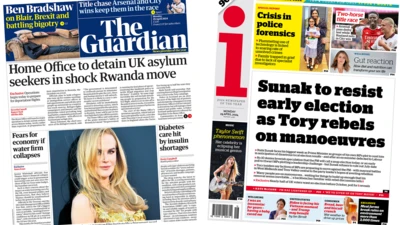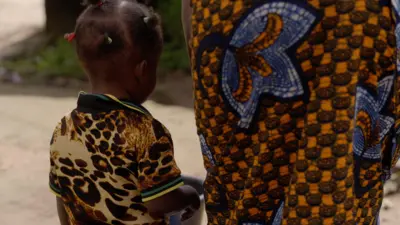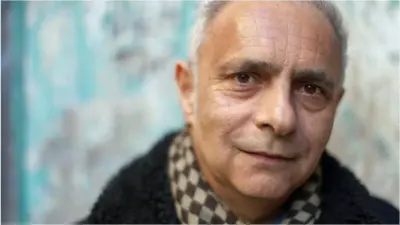We've updated our Privacy and Cookies Policy
We've made some important changes to our Privacy and Cookies Policy and we want you to know what this means for you and your data.
Ukraine weapons: What arms are being supplied and why are there shortages?
Image source, Getty Images
The US will start giving Ukraine crucial new weapons, after President Joe Biden approved additional military aid worth almost $61bn (£49bn).
In particular, Ukraine needs more missiles and shells to stop Russian forces making further gains on the battlefield.
What new military aid has been pledged for Ukraine?
The aid for Ukraine is part of a $95bn (£76bn) package which also includes military support for Israel and Taiwan.
The supply of US weapons to Ukraine dried up in early 2024, because a bill to grant more aid was delayed in Congress.
But President Biden said the US can now start sending armaments "right away".
Ukrainian President Volodymyr Zelensky said the commitment "reinforces America's role as a beacon of democracy and leader of the free world".
The aid package includes at least $8bn (£6.5bn) to re-supply Ukraine with missiles and ammunition.
Prime minister Rishi Sunak has also confirmed the UK will provide an extra £500m on top of the £2.5bn in military aid it had already pledged to give Ukraine in 2024. This will pay for extra missiles, ammunition, armoured vehicles and all terrain vehicles.
In February 2024, the EU agreed a further €50bn (£42bn; $54bn) aid package for Ukraine, after Hungary stopped blocking the deal.
The EU failed to meet its target of sending one million shells to Ukraine by the beginning of March.
However, the Czech Republic agreed a $1.5bn deal for a group of 18 Nato and EU countries to buy 800,000 rounds - both 155mm and 122mm calibre - from outside the EU.
How much military aid has previously been supplied to Ukraine?
Between February 2022 and the end of February 2024, the US delivered or committed weapons and equipment worth $46.2bn to Ukraine, according to the Kiel Institute, a German research organisation.
Over the same period, Germany gave Ukraine weapons and equipment worth $10.7bn, the UK $5.7bn, Denmark $5.2bn, and the Netherlands $4.1bn.
What arms shortages is Ukraine facing, and how are they affecting the war?
The US had warned that Ukraine's military is running short on munitions and morale is low.
One key shortage is of air defence missiles.
President Zelensky said Ukraine needs "seven more Patriots or similar air defence systems" to protect its cities.
These would allow Ukraine to "counter Russia's glide bombs, which [Moscow] is using to pound defensive positions and civilian targets like power stations," says Dr Marina Miron, of King's College London.
Russia has carried out repeated air attacks on Ukraine's second largest city Kharkiv, which is near the Russian border. The commander of Ukraine's National Guard, Oleksandr Pivnenko, said Russian forces may start to advance on the city.
Ukrainian armed forces have also been limited to firing 2,000 shells a day, according to the UK-based think tank, the Royal United Services Institute (Rusi).
In contrast, Russian forces have been firing up to 10,000 shells a day, Rusi said. It said Russia gets almost three million shells a year from its own factories and from North Korea.
Ukraine has lost 583 sq km (225 square miles) of territory in the east of the country to Russian forces since October 2023, largely because of a lack of artillery.
It blamed shortages for the loss of the town of Avdiivka in February.
The resumption of US ammunition supplies means Ukraine could start using more artillery shells from its stocks, says Justin Crump, of risk intelligence company Sibylline.
"Until now, Ukrainian forces have been rationing shell use because they haven't been able to tell when new supplies are coming," he says.
What weapons have Western countries given Ukraine?
Anti-tank weapons
Western countries responded to Russia's invasion in February 2022 by giving Ukraine's armed forces defensive weapons, to counter Russia's armoured brigades.
The US and UK supplied thousands of Javelin and Nlaw anti-tank missiles.
These were considered crucial in stopping the advance of Russian forces on Kyiv.
Air defence systems
To counter Russian air superiority, and its attacks on Ukrainian cities and infrastructure, Western nations sent Ukraine several types of air defence system.
These range from the UK's short-range anti-aircraft weapon, Starstreak, to the Patriot missile system.
Patriots are expensive to operate - one missile costs about $3m.
The US and Norway have also provided the Nasams (National Advanced Surface-to-Air Missile System) for air defence, and Germany has offered the Iris-T.
Artillery and missiles
After Russia's retreat from Kyiv, the war became focused on the east of the country. Artillery and missiles were heavily used by both sides.
Australia, Canada, the US and others sent M777 howitzers and ammunition to Ukraine.
The US and UK also provided missile systems including Himars, and the M270 MLRS.
Ukraine has also received long-range missiles such as Scalp from France, Storm Shadow from the UK and ATACMS from the US.
The US has also supplied Ukraine with the longest-range version of ATACMS, which can travel 190 miles (300km). Before April 2024, it had only provided a shorter range version.
In July 2023, the US said it had supplied cluster bombs to Ukraine, to help dislodge Russian troops from defensive positions.
These weapons, delivered mostly in artillery shells, scatter multiple bomblets, and are banned by more than 100 countries because of the risk they pose to civilians.
Tanks
In early 2023, Western nations agreed to send tanks to Ukraine.
It was hoped they would enable Ukraine to breach Russian defensive lines.
The UK provided the Challenger 2.
The US sent 31 Abrams tanks, and European nations have sent several German-made Leopard 2 tanks.
The US-built M1 Abrams has been described as the most advanced tank in the world.
However, none of this new armour enabled Ukraine to make a major breakthrough in its counter-offensive.
Drones
Drones have featured heavily throughout the war, for surveillance, targeting, launching missiles and as "kamikaze" weapons.
Turkey supplied missile-firing Bayraktar TB2 drones at the start of the war, the US has provided "Switchblade" kamikaze drones, and several countries have sent commercial surveillance drones, such as the Chinese-made DJI Mavic 3.
In February 2024, the UK government said it would join a coalition of countries supplying Ukraine with thousands of "first person view" drones, for observation and target spotting.
Fighter jets
Ukraine has consistently asked the US for fighter jets, to counter Russia's air superiority.
In May 2023, President Joe Biden agreed to let other nations supply it with US-made F-16s. Denmark and the Netherlands offered to donate planes.
Ukrainian pilots have been learning how to fly them in 11 Western countries.
Top Stories
Features & Analysis
Most read
Content is not available








